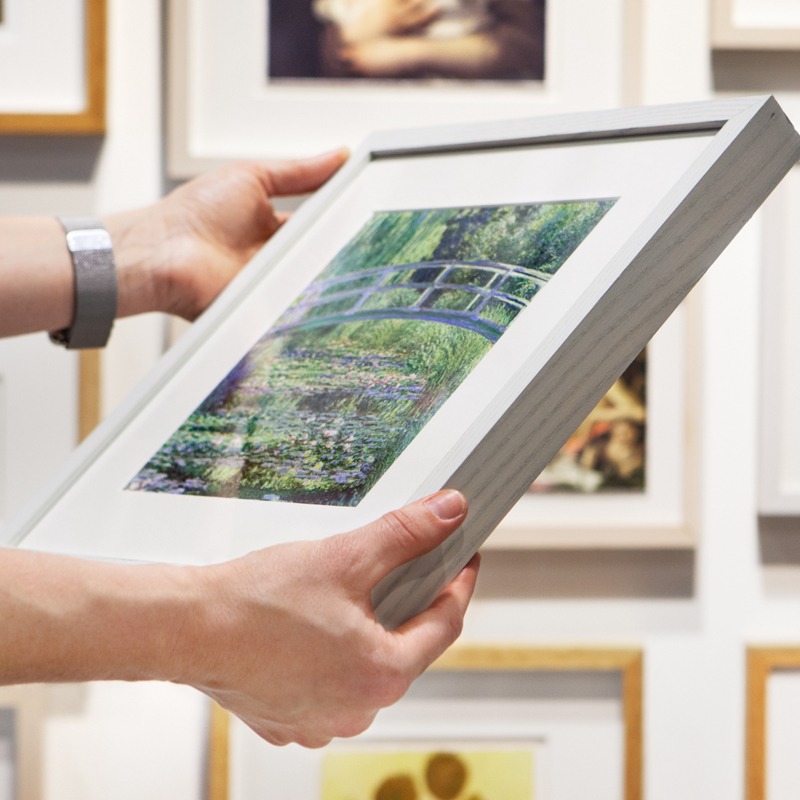Camille Pissarro, 'Late Afternoon in our Meadow', 1887
About the work
Overview
In 1884 Pissarro settled with his family in the village of Eragny. He painted a number of views of this meadow which is planted with small trees still surrounded by their protective cages. It is late afternoon and the long shadows thrown by the trees radiate out in a fan shape towards the left corner. A solitary figure stands in the sun, a basket in one hand, the other on her hip.
In 1885 Pissarro met Georges Seurat and subsequently adopted his pointillist technique of applying small dots of colour alongside each other to create an optical mixture. Here he has enlivened the underlying green of the grass with small touches of pink and yellow, while using blue, mauve and the odd touch of orange in the shadowed areas. In the trees, he has painted the foliage with strong vertical brushstrokes. The creams, yellows and blues of the densely applied brushstrokes in the sky reinforce the pervading atmosphere of shimmering light.
Key facts
Details
- Full title
- Late Afternoon in our Meadow
- Artist
- Camille Pissarro
- Artist dates
- 1830 - 1903
- Date made
- 1887
- Medium and support
- oil on canvas
- Dimensions
- 54 × 65 cm
- Inscription summary
- signed; dated
- Acquisition credit
- Accepted in lieu of Inheritance Tax by HM Government (under a hybrid arrangement) from the collection of William Waldorf Astor, 3rd Viscount Astor, and allocated to the National Gallery, with the support of a generous legacy from James Francis George Wilson, 2020
- Inventory number
- NG6689
- Location
- Not on display
- Collection
- Main Collection
- Frame
- 19th-century French Frame
Provenance
Additional information
Text extracted from the National Gallery’s Annual Report, ‘The National Gallery: Review of the Year, April 2019 – March 2020’.
Bibliography
-
2020National Gallery, The National Gallery: Review of the Year, April 2019 - March 2020, London 2020
About this record
If you know more about this painting or have spotted an error, please contact us. Please note that exhibition histories are listed from 2009 onwards. Bibliographies may not be complete; more comprehensive information is available in the National Gallery Library.











